In the ever-evolving world of technology, navigating the landscape of software solutions can be a challenge. One term that frequently pops up is “SaaS” – but what exactly is it? This article delves into the concept of SaaS, exploring its core characteristics as a software delivery model, its advantages and limitations, and how it compares to traditional software ownership.
Beyond Installation: The Core Tenets of SaaS Delivery
Software as a Service (SaaS) is a cloud-based software delivery model that allows users to access and utilize software applications over the internet, typically through a web browser. Unlike traditional software models where you purchase a license and install the software on your own computer, SaaS operates differently.
Here’s what defines SaaS as a delivery model:
Centralized Hosting: The software application resides on the vendor’s servers, eliminating the need for local installation or maintenance on individual user devices.
Subscription-Based Access: Users access Mortgage Leads Telemarketing the software through a subscription model, typically paying a monthly or annual fee. This eliminates the upfront cost of purchasing a software license.
Scalability and Flexibility: SaaS solutions are inherently scalable. Users can easily increase or decrease their usage based on their needs, offering flexibility for growing businesses.
Automatic Updates:
The vendor manages all software updates and maintenance, ensuring users always have access to the latest version of the application.
Accessibility: SaaS applications are accessible from any device with an internet connection, offering location and device independence for users.
These core characteristics make SaaS a convenient, cost-effective, and scalable solution for businesses of all sizes.
Advantages of the SaaS Model: Embracing Efficiency
SaaS offers a plethora of advantages over traditional software ownership models:
Reduced Costs: SaaS eliminates upfront licensing fees and reduces IT infrastructure costs associated with in-house software. This translates to lower barriers to entry and improved cash flow for businesses.
Simplified Deployment: SaaS eliminates the need for complex software installation and configuration. Users can typically access the software within minutes of subscribing.
Automatic Updates: Users benefit from automatic updates and bug fixes, ensuring they always have access to the latest features and security patches.
Scalability and Flexibility: SaaS allows businesses to easily scale their software usage up or down as needed, accommodating growth or changing requirements.
Accessibility and Mobility:
Since SaaS applications are web-based, users can access them from any device with an internet connection, offering increased mobility and work flexibility.
Integration Potential: Many SaaS solutions offer seamless integration with other cloud-based applications, streamlining workflows and improving overall business efficiency.
These advantages make SaaS a compelling choice for businesses seeking a cost-effective and efficient way to access and utilize software solutions.
Beyond the Hype: Limitations of the SaaS Model
While SaaS offers numerous advantages, it’s important to consider its limitations:
Vendor Lock-In: Once you subscribe to a SaaS solution, switching to another vendor might involve data migration challenges and potential disruptions to your workflow.
Recurring Costs: SaaS requires ongoing subscription fees, which can translate to higher overall costs compared to a one-time purchase of traditional software licenses in the long run.
Limited Customization: SaaS solutions cater to a broad user base, offering less flexibility for customization compared to in-house software.
Internet Dependency:
Reliable internet connectivity is crucial for Lead generation process map accessing and utilizing SaaS applications. Any internet outages can disrupt workflows.
Security Concerns: Data security is a major concern with SaaS, as user data resides on the vendor’s servers. It’s crucial to choose a reputable vendor with robust security measures in place.
By understanding these limitations, businesses can make informed decisions about whether a SaaS solution aligns with their specific needs and priorities.
SaaS vs. Traditional Software: Choosing the Right Model
The choice between SaaS and traditional software ownership depends on your specific business needs. Here’s a quick comparison:



